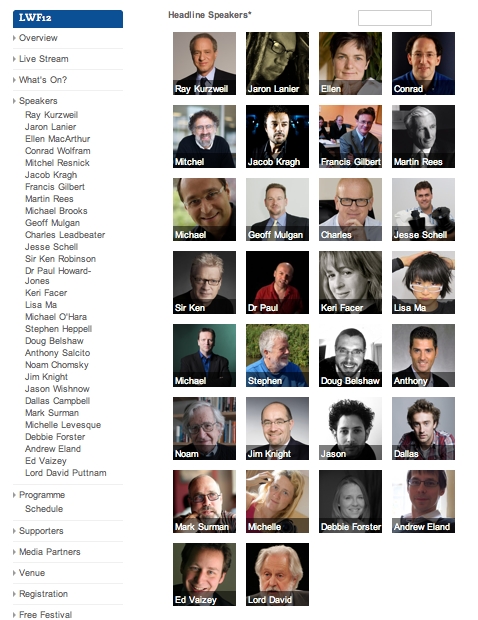Over the last decade the volume and range of educational content available on the Internet has grown exponentially, boosted by the recent proliferation of open educational resources. While search engines such as Google have made it easier to discover all kinds of content, one critical factor is missing where educational resources are concerned – context. Whether you are a teacher, learner or content provider, when it comes to discovering and using educational resources, context is key. Search engines may help you to find educational resources but they will tell you little of how those resources have been used, by whom, in what context and with which outcome.
Formal educational metadata standards have gone some way to addressing this problem, but it has proved to be extremely difficult to capture the educational characteristics of resources and the nuances of educational context within the constraints of a formal metadata standard. Indeed it is notoriously difficult to formally describe what a learning resource is, never mind how and by whom it may be used. Despite the not inconsiderable effort that has gone into the development of formal metadata standards, data models, bindings, application profiles and crosswalks the ability to quickly and easily find educational resources that match a specific educational context, competency level or pedagogic style has remained something of a holy grail.
A new approach to this problem is currently being explored by the Learning Registry, an innovative project being led and funded by the U.S. Department of Education and U.S. Department of Defense. In a guest blog post for CETIS in March this year ADL Senior Technical Advisor Dan Rehak explained that the Learning Registry intends to offer an alternative approach to learning resource discovery, sharing and usage tracking by prioritising sharing of second-party usage data and analytics over first party metadata.
Dan set out the Learning Registry’s use case as follows:
“Let’s assume you found several animations on orbital mechanics. Can you tell which of these are right for your students (without having to preview each)? Is there any information about who else has used them and how effective they were? How can you provide your feedback about the resources you used, both to other teachers and to the organizations that published or curated them? Is there any way to aggregate this feedback to improve discoverability?
The Learning Registry is defining and building an infrastructure to help answer these questions. It provides a means for anyone to ‘publish’ information about learning resources. Beyond metadata and descriptions, this information includes usage data, feedback, rankings, likes, etc.; we call this ‘paradata’”
Paradata is essentially a stream of activity data about a learning resource that effectively provides a dynamic timeline of how that resource has been used. As more usage data is collaboratively gathered and published the paradata timeline grows and evolves, amplifying the available knowledge about what educational resources are effective in which learning contexts. The Learning Registry team refer to this approach as “social networking for metadata”.
The Learning Registry itself is not a search engine, a repository, or a registry in the conventional sense. Instead the project aims to produce a core transport network infrastructure and will rely on the community to develop their own discovery tools and services, such as search engines, community portals, recommender systems, on top of this infrastructure. Dan commented; “We assume some smart people will do some interesting (and unanticipated) things with the timeline data stream.”
The Learning Registry infrastructure is built on couchDb, a noSQL style “document oriented database” providing a RESTful JSON API. The initial Learning Registry development implementation, or node, is available as an Amazon Machine Instance, hosted on Amazon EC2. This enables anyone to set up their own node on the Amazon cloud quickly and easily. As CouchDb is a cross-platform application, nodes can be run on most systems (e.g. Windows, Mac, Linux). The Learning Registry plan to produce zero-config installers to simplify the process of adding nodes to the network with the aim that developers should be able to set up their own node within a day. These nodes will form a decentralised network with each participant configuring their own rules regarding access permissions and what data they gather and share.
Although the Learning Registry will encourage users to produce their own tools and services on top of the network of nodes, the development team have defined a small set of non-core APIs for integration with existing edge services, e.g. SWORD for repository publishing and OAI-PMH for harvesting from the network to local stores.
A key feature of the Learning Registry is that it is metadata agnostic; it will accept legacy metadata in any format and will not attempt to harmonise the metadata it consumes. The team have also developed a specification for sharing and exchanging paradata which is inspired by the Activity Steams format.
As a leading innovator in digital infrastructure for resource discovery JISC have followed the development of the Learning Registry with interest, and in keeping with our remit as a JISC Innovation Support Centre CETIS have fostered a strategic working relationship with the Learning Registry team. In addition to maintaining a watching brief on the project, participating in the technical development working group, and submitting position papers to the Learning Registry summit, CETIS have also liaised directly with the project’s developers and technical advisor and communicated relevant strategic and technical developments back to JISC and the community. The Learning Registry team have also engaged closely with the JISC, CETIS and the UK technical development community by participating in two DevCSI hackdays, contributing to several CETIS events, and attending a number of JISC strategic planning meetings.
JISC have now extended this innovative collaboration with the announcement that they will fund the development of a Learning Registry test node, the first to be developed outwith the US. The node will be developed at MIMAS with input and support from JISC CETIS.
In a press release JISC’s Amber Thomas commented,
“This international collaboration will see us contributing the UK’s expertise to the Learning Registry. We are working with Mimas and JISC Cetis to support the Registry’s vision of gathering together the conversations, ratings, recommendations and usage data around digital content.”
And Steve Midgley, Deputy Director, Office of Education Technology at the US Department of Education added,
“I am greatly encouraged by the collaboration and opportunity presented by our work with JISC on the Learning Registry.”
The Learning Registry project has already generated considerable interest in the UK. We believe that technical developers, infrastructure managers and resource providers will have much to learn from the JISC Learning Registry test node development and we hope that ultimately educational communities in both the US and the UK will benefit from this innovative project.
Further Reading
 In addition to supporting the OER Programmes John has also maintained a watching brief on the Learning Registry project in the US. John has been instrumental in communicating the potential impact of this initiative and disseminating regular updates to JISC and the wider community.
In addition to supporting the OER Programmes John has also maintained a watching brief on the Learning Registry project in the US. John has been instrumental in communicating the potential impact of this initiative and disseminating regular updates to JISC and the wider community. 